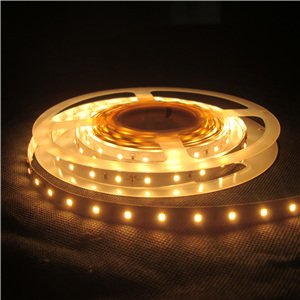LED Light Strips are a fantastic option when it comes to lighting. They are mostly preferred because with them, you spend less to run your lighting. They are especially perfect for those who want some form of relaxation. There are certain factors that one is supposed to be on the lookout for when trying to get an LED light strip. Failing to have this required knowledge will deprive of getting exactly what you want in this regards. This article will be giving you a nudge in the right direction as to some of the things you are meant to know regarding LED strip lights.
LED Strip Light type is important
Getting any LED strip light without considering the LED strip light type will be a big mistake. You need to know the very type you are going for. Knowing that there are about 5 types of LED strip light is a good place to start from. For more emphasis, these are the five types: fixed LEDs, rope LEDs, self-adhesive strips, single and multi-colour LED strips. Just so you are fully guided, the rope LEDs are mostly ideal for domestic use. If you are looking forward to using your LED lights in your home, then the rope type will be a fantastic choice. In all, flexible strips seem to have a better effect on product display. Are you dealing on products that can only patronized with the right approval? Then go for the flexible strips.
Durability Expectations
How durable your flexible LED strips are is so important that it should not be taken for granted. What you are getting should correspond with the durability you are expecting. It is possible you are already saying to yourself, how is it possible for you to determine the durability of your LED light strips by merely looking at it. You do not have to worry. There are a few ratings that can help you out here. A very good example is the IP rating. This rating tells you how much defiance this LED light has for the elements responsible for cutting short its lifespan.
The first digit in the IP rating indicates what protection level you should be expecting with regards to its resistance to dust. 6 represents the highest protection level. The second digit represents how resistant it is to water. It is the same with the previous one, the higher the number the more protection you should expect against the elements.
For instance, an LED light strip with a rating of IP20 is designed to withstand dust alone. You can see that the second digit is zero. This type of strip should not be brought close to water since it has zero tolerance for it.
Knowing Lumen rating
You can hardly talk about the LED strip lights and not talk about their lumen rating. It is just an incomplete discussion. The LED strips come in their varying lumen capacity. The lumen variation actually stem from the fact that they have been produced by different manufacturers. The higher the LED density the more lumens you have which automatically translates to more brightness.
So you can determine the lumen number of the LED or by the length of the strip. For instance, the output in terms of lumen for a strip that is 16.4ft with 18 LEDs for every foot is likely to be 360 lumens for every foot. The lumen rating required for your LED actually depends on what you are using it for. Written below is a reasonable guide to help you make your choice:
• For close by task lighting and below- cabinet lighting should be between 175 and 550 lumens per ft.
• Distant task light should range between 350 to 1200 lumens per ft.
• Not too direct lighting is between 375 and 1200 lumens per ft.
You can always add more lumen to yours if you want more brightness.
Colour temperature
You will need to also decide what your colour temperature is worth before making a choice. Colour temperature is the resulting temperature from within the LED that defines it glow. Colour temperature is specified by an SI unit of kelvin. They are actually in the range of 2200k-6000k. Those with lower temperatures are meant to produce warmer hues while those with higher temperatures result in a bluish hues. A look at the following colour temperature recommendations will be very helpful:
• Bathrooms and outdoor lighting requires between 5000k and 6000k.
• Hallways and kitchens require between 3500k and 4100k.
• Bedrooms and living rooms require between 2200k and 3000k.
Power supply
One more thing you may need to put into consideration is the amount of power supply you desire to light up your LED strip light. The amount of energy is simply determined by the watt per foot. For instance, an LED strip utilizing 7.23 Watts per foot would be needing 72.30 watts for per 10 ft. strip.
Furthermore, the power supply should have additional 20 percentage to the usual rating. Hence, the above illustrated strip should have about 90 watts to operate well. If they do not write the watts needed on the body of the strip, then you would have to do the calculation manually. You can do this by finding the product of the input voltage of the device and its ampere rating.
In conclusion, making sure you are getting a perfect LED light strips for your project is not something that should be done in a hurry. You need to take your time and check out all the above stated information before you make your buy. The department of energy in US even advises that people take their time and ensure they are getting an LED strip light that is worth all the efforts.

